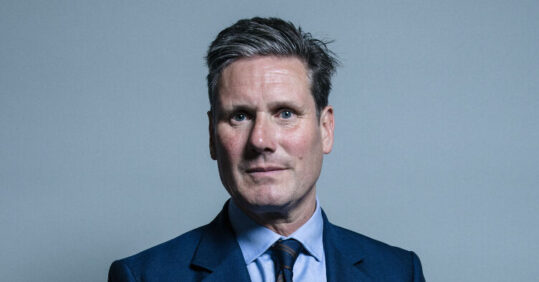Starmer to set out plans for £1.1bn overtime funding to cut waiting lists

Labour leader Sir Kier Starmer will use his party’s conference this week to announce plans to cut NHS waiting lists through a £1.1bn investment and an increase in overtime work.
The leader of the opposition will set out his vision for the health service in a speech on Tuesday.
Under the proposals, £1.1bn investment would be used to provide NHS staff with evening and weekend overtime shifts.
According to Labour, the funding would enable the NHS to carry out an extra two million operations, scans and appointments in the first year of government.
The plans would also see neighbouring hospitals pooling their staff and using shared waiting lists to make ‘best use of available capacity’.
Patients would be given the choice to travel to a nearby hospital to get treated on an evening or weekend rather than wait longer.
Related Article: QICN bids farewell to Dr Crystal Oldman as she retires from CEO role
The funding would be allocated to integrated care boards, which would be subject to ‘clear expectations of increased activity to ensure return on investment’, said Labour.
Responding to the plans, Professor Nicola Ranger, Royal College of Nursing (RCN) chief nurse, noted that weekend work was already ‘routine’ for many nurses as part of their shift patterns.
‘Too often the NHS runs on the goodwill of its staff,’ Professor Ranger said.
‘Nursing staff work so much overtime that is never paid – staying behind an hour or two after 12-hour shifts to keep patients safe – so a change in this culture is needed.’
As well as fair pay and treatment, boosting staffing levels was essential, Professor Ranger added.
‘Any Labour government would likely take office at a time of record unfilled nurse jobs, in excess of 40,000, and so the long-term answer is of course to have more staff overall,’ she said.
‘When many nurses already work additional full days to make ends meet financially, extra capacity is urgently required.’
Christina McAnea, general secretary of the Unison union, described Labour’s plans as a ‘stop-gap measure’.
She said: ’Health workers are already up against it and there are only so many hours in a day, but a voluntary scheme, where staff are paid fairly, that avoids the use of expensive agencies, makes sense in the short term.’
Related Article: RCN to offer ‘safe space’ to discuss Supreme Court ‘sex’ ruling
According to Ms McAnea, the priority for any government should be to retain existing staff and encourage more temporary workers to go on the books and become directly employed NHS workers.
‘There must also be a properly funded recruitment campaign to fill the thousands of NHS vacancies,’ she said.
‘That’s how to tackle the huge backlog in the most efficient and effective way.’
Sir Julian Hartley, chief executive at NHS Providers, agreed that staffing levels needed to be addressed.
‘There are more than 125,000 staff shortages in the NHS, with official figures showing nearly a third of the existing workforce feel burned out,’ he said.
‘Health unions are also striking across the country due to staff dissatisfaction with pay and working conditions, which is taking a huge toll on patients, staff and budgets.
‘These challenges must be tackled – including both sides of the pay dispute finding a resolution.’
Related Article: ‘Concerning acceleration’ in drug-resistant gonorrhoea ahead of vaccine programme
Sir Julian added that trusts would welcome the £1.1bn investment in Labour’s plans but the proposals should be part of a ‘broader strategy’ involving workforce growth and retention, together with investment in healthcare infrastructure.
Labour’s plan to cut waiting lists follows the party’s proposals for a ‘Fit For The Future Fund’ to provide £171m funding a year for CT and MRI scanners.
The combined £1.6bn of investment in Labour’s proposals for the NHS would be funded by abolishing the non-dom tax status that allows people who live and work in Britain to pay their taxes overseas, the party said.

See how our symptom tool can help you make better sense of patient presentations
Click here to search a symptom




